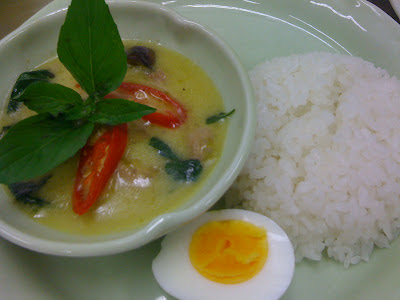If
you read this blog because you are a friend of mine, which I suspect you are,
then you probably know that I'm in Japan this year.
Whee!
Japan is fun. Japanese food is also fun. And I am slowly, slowly immersing
myself, like at the swimming pool. I'm probably in up to about my ankles so
far.
So
yes... I'm working for a company that apparently pays pretty poorly, but it's
still the most money I've ever earned, because it is full-time work, plus
through the company I've met a heap of great people, plus the company organises
housing and car lease, and places for me to teach, and a bit of extra security
for when I do stupid stuff or if something goes wrong. So I don't mind too much
about the pay.
The
foreigner community is great, too. I'm probably at just the right age to
appreciate the sort of stuff that happens... one such being a cooking club,
whose inaugural session I was lucky enough to attend.
We
made nikujaga, which means 'meatpotato' or maybe more like 'meatpota' because
'potato' is 'jagaimo' ... and which is better than its name. My next door neighbour calls it Japanese soul food.
And
I made it tonight! OISHIIIIII!!!!! (delicious/yum)
I
also made the kind-of-pickled cabbage/cucumber salad that we made at the
cooking club, and it was also oishii. Cut some cabbage and cucumber. Put on a
bit of salt and maybe a tiny bit of granulated dashi. Squash a bit.
Nikujaga - serves 2 people
200g sliced beef (or
pork)
2 potatoes
1/2 carrot (I used 1)
1 onion
Snow peas (if you can
afford them. I didn’t bother.)
1 cup water
½ tsp granulated dashi
1 ½ tbsp sake (we had US
tablespoons, i.e. 1 tbsp = 15ml)
1 ½ tbsp sugar
1 ½ tbsp soy sauce
Preparation
Peel the potatoes and cut
into 8ths.
Blanche snow peas. Set
aside. (Or just chuck them in a minute before the end, that’s what I would do.)
Slice carrot into rolling
wedges. Cut the onions in half. Cut each half into 3 wedges. Cut the meat
bits in half.
Cooking
Fry meat until brown.
Add carrots, onion and potatoes. Cook until potatoes become opaque.
Add dashi, water, sake
and sugar. Cook for 10 minutes, covered.
Add soy sauce. Cook
for another 10 minutes or so to reduce the soup. Add snow peas and cook for
about another minute.
Serve with
rice, and cabbage salad. Itadakimasu!
 Why haven't I posted about Hazeldean Forest Farm before?
Why haven't I posted about Hazeldean Forest Farm before?













